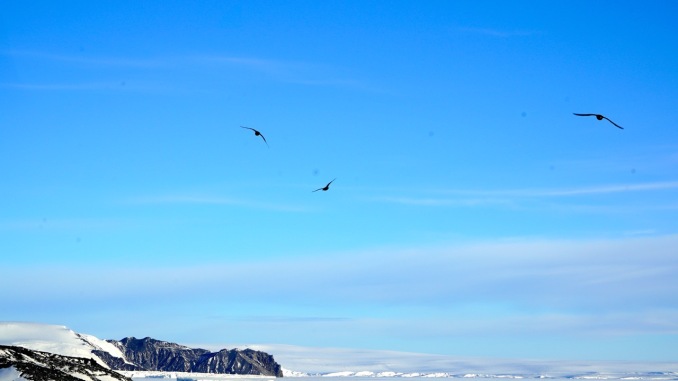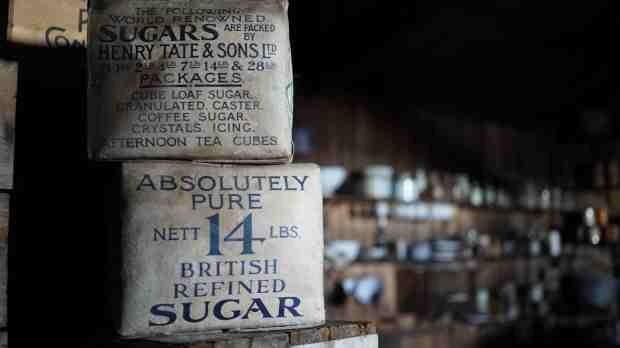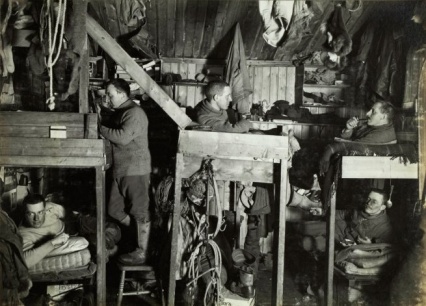Much of my Antarctic fascination is rooted in Apsley Cherry-Garrard’s The Worst Journey in the World and in the stories of Scott’s Terra Nova expedition. I’ve branched out quite a bit, but my imagination about Antarctica has always seemed to return to this narrative and this place: Cape Evans, where Terra Nova was based. Going there …. I can’t begin to say how important it was for me.
When you are an NSF Antarctic artist, you generally rely on the good will of science teams to get out into the field. They may let you accompany them on a trip, or they may donate some leftover helo hours to help you get to them. It does have to be worked out well in advance, but as we discovered with our trip to Cape Royds, it might change. I think and hope many of the scientists realize the potential outreach value of inviting an artist to see what they are up to. But this trip was different; it was all ours. We had 4-5 hours on the ground. And we had the best company: Katy, an experienced and generous Antarctic traveler and our support person throughout this entire adventure, to whom we owe so much I couldn’t begin to enumerate it all, and filmmaker Anthony Powell who was kind enough to take time away from Scott Base and a busy schedule to come with us to pose as Herbert Ponting (how perfect is that anyway–the new Antarctic filmmaker reenacting photographs of the first Antarctic filmmaker?).
Antony Powell’s website for Antarctica: A Year on Ice: http://frozensouth.weebly.com/
In the shoulder season Cape Evans can be reached by sea ice, and many McMurdrians visit via snowmobile. But as the summer progresses the ice becomes unreliable, and one must go by helicopter. During the short hop, I thought about how members of Terra Nova or later of the Ross Sea Party from the Aurora–the other half of Shackleton’s Endurance–made this journey on foot by sea ice. Thirteen miles. It could be hazardous. When the ice got unreliable, there was no helicopter then, although for awhile on Terra Nova they rigged a telephone between Cape Evans and the hut at Hut Point. The remnants of both ends are still in the huts. Going into shore to walk between the huts meant a perilous pretty much impossible climb through cliffs and the heavily crevassed Erebus glacier ice tongue. Sometimes they risked the sea ice when it was not quite reliable; it could blow out very quickly, as it did in the harrowing story of the ponies trapped on floes in Cherry’s book, for instance. After a second year of sledging to stock (futile) depots for Shackleton and losing a man to scurvy, Mackintosh and Hayward of the stranded Ross Sea party, still suffering the lingering effects of the deprivations of their labors, simply couldn’t take the blubbery squalor of Hut Point another day and decided to risk walking to Cape Evans even though a storm was approaching from Minna Bluff and the ice was not yet sure. They were never seen again.
Scott learned from his mistakes. Discovery was frozen in at the site of our present wharf (with no Polar Star to break her out) and the Hut Point hut was just all wrong for the Antarctic. It was built pre-fab on an Australian model with a veranda running round it that, despite insulating it with felt, was designed to keep out the heat. It certainly does that. When we shot inside the hut a few days ago, my hands got colder than they have ever been on this whole trip. We were inside and I did the stupid thing, got engrossed in what we were doing and forgot to care about my hands. You go inside out of the wind, you take your gloves off to adjust all your gizmos. I can’t imagine living in that hut. I was in there for under and hour and was chilled to the bone even with Big Red on (and my gloves off).
He chose Cape Evans for his next expedition because it had a reasonable anchorage (though not in a gale, and lacking protection from the major movements of the sea ice, as the Aurora was to learn) and a low beach; it was located right next to an entry way to what they called “the barrier” and we now call the Ross Ice Shelf (they were not quite aware it was floating on the sea) that led to the Beardmore and the “gateway” Shackleton had discovered to the central plateau. And he brought a much better hut, designed to keep heat in, and lined this time with a material woven from seaweed. After restoration by the New Zealand Heritage Trust, it looks snug and fine, and it was both fascinating inside and a welcome respite from the biting winds of the cape.

We had a fine sunny evening–we went at night because of Anthony’s schedule but also because of the light; it would be worked around so that the sun shone on Erebus rather than was shielded by the volcano. As we were landing I had a lump in my throaty the size of Tennessee. There it all was–Erebus, the hut, the “ramp” leading to the water, the cross (for the Ross Sea party dead: Spencer-Smith, Mackenzie, and Hayward), and on the other side of the cape, the edge of the ice shelf.
We were greeted by a few Weddell seals lolling on the beach and several swooping skuas. I remembered that Scott referred to the site as “the Skuary” for awhile before he renamed it for Teddy Evans, his second in command on Terra Nova.

Here is the hut’s history provided by the New Zealand Heritage Trust:
http://www.nzaht.org/AHT/HIstoryEvans/
We made our portraits of Anthony outside first, posing him in the position of 2 separate images of Ponting. I was having a fine old time and I hadn’t even entered the hut yet. But eventually, we all did. And there it all was: the long dining table, Ponty’s darkroom, Scott’s walled-off officers’ nook, the kitchen with its crockery and food tins, the bunks with various personal items–stockings, magazines, a comb–all stuff belonging to these men about whom I had read so much.


I am standing next to Cherry’s bunk, in the “Tenements,” the lower left one.


Later tenants–perhaps from the Ross Sea party?–had glued collages of kitty cats and dogs to the bed boards in the tenements. Too many textures and details to list here. It seemed to me that Ponting’s photos had been employed in the restoration of the hut–in a way also re-enacting his photos, as we were doing. The positions of the bodies in the huts we could not, however, directly re-enact. Visitors used to touch all kinds of things. Sara Wheeler writes about lying down in Scott;s bunk, for instance. Some folks would even steal artifacts, but now the huts are strictly protected and one must touch nothing. But being there is enough. I didn’t need to lie down on Cherry’s bunk. I had Ponting’s image of him peering out in my head. The presence of the former occupants is palpable–for me at least partially because the photographs haunt the emptiness. But mostly the stories.
Back outside to take some landscapes, and we hiked over the ridge with the cross because Katy had come back from there and said there were a couple of Emperors over there, 5 minutes’ walk. And so there were, posing in front of Erebus: a gift, a miracle, an indelible image. It was that kind of journey.
